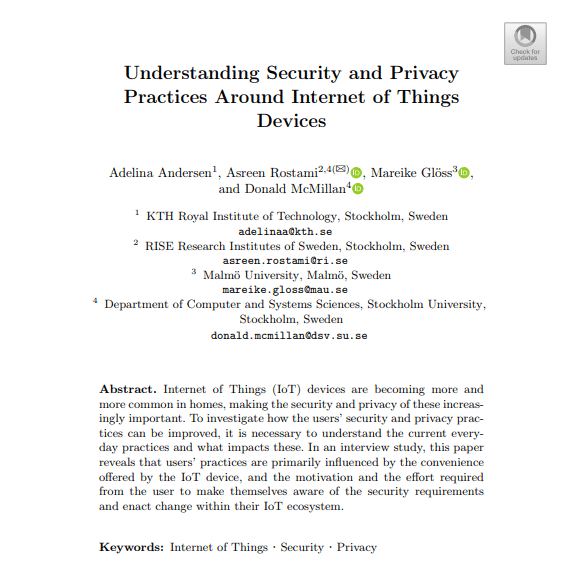
Understanding Security and Privacy Practices Around Internet of Things Devices
Internet of Things (IoT) devices are becoming more and more common in homes, making the security and privacy of these increasingly important. To investigate how the users’ security and privacy practices can be improved, it is necessary to understand the current everyday practices and what impacts these. In an interview study, this paper reveals that users’ practices are primarily influenced by the convenience offered by the IoT device, and the motivation and the effort required from the user to make themselves aware of the security requirements and enact change within their IoT ecosystem.
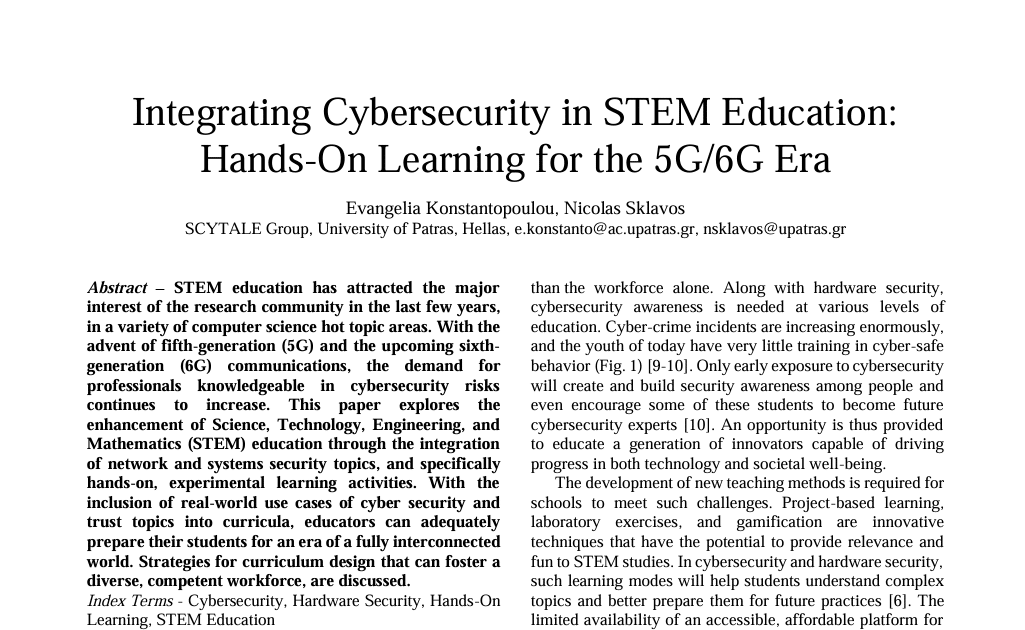
Integrating Cybersecurity in STEM Education: Hands-On Learning for the 5G/6G Era
This paper explores the enhancement of Science, Technology, Engineering, and Mathematics (STEM) education through the integration of network and systems security topics, and specifically hands-on, experimental learning activities. With the inclusion of real-world use cases of cybersecurity and trust topics into curricula, educators can adequately prepare their students for an era of a fully interconnected world. Strategies for curriculum design that can foster a diverse, competent workforce are discussed.
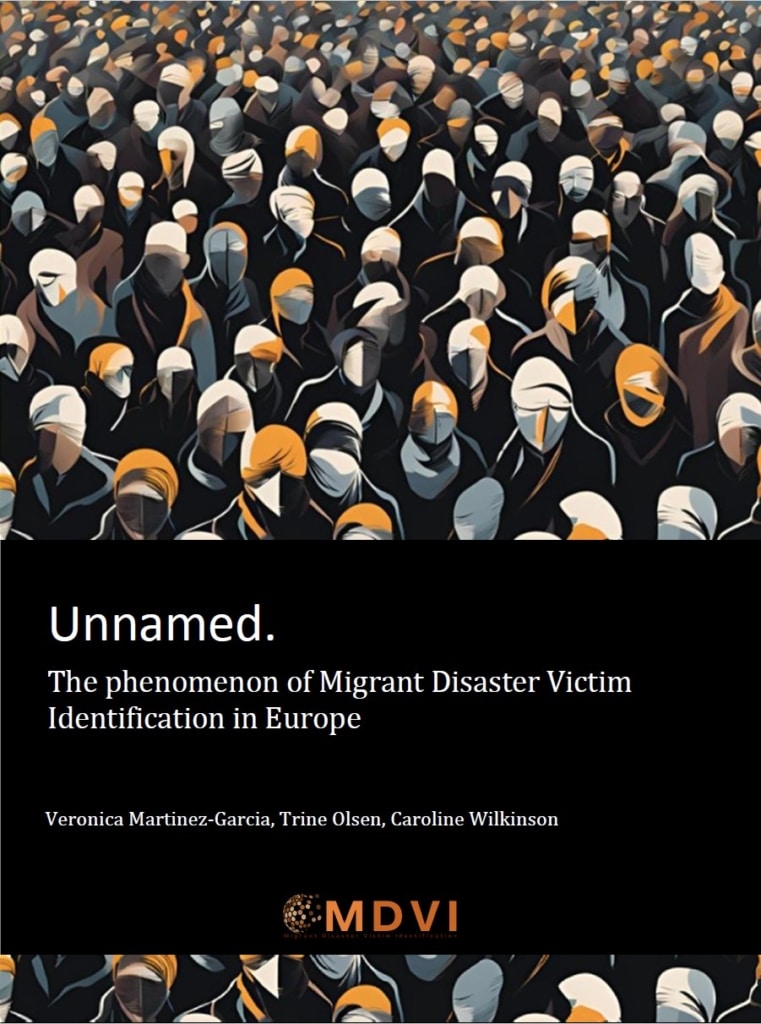
Unnamed. The phenomenon of Migrant Disaster Victim Identification in Europe.
Among the various existing case scenarios within the contexts of DVI, there is also what has recently begun to be called MDVI (Migrant Disaster Victim Identification). This terminology groups together those scenarios characterised by the mass death of migrants during the migration process, including deaths caused by shipwrecks or drowning, violence, exposure to extreme environmental conditions, lack of health care and any other aetiology as long as they occur in transit or on the migratory route. In the last 10 years alone, more than 30,000 migrants have died trying to reach Europe (mostly in shipwrecks in the Mediterranean), of which more than 23,000 have not been identified.
More Info: https://migrant-dvi.eu/

Artificial Intelligence Paradigms for Next-Generation Metal–Organic Framework Research
In this perspective, we discuss the latest developments in machine-learning and deep-learning research on metal organic framework (MOF) materials and reflect on how their utilization has evolved within the large language models (LLMs) domain. We explore future benefits to accelerate and automate materials development research.
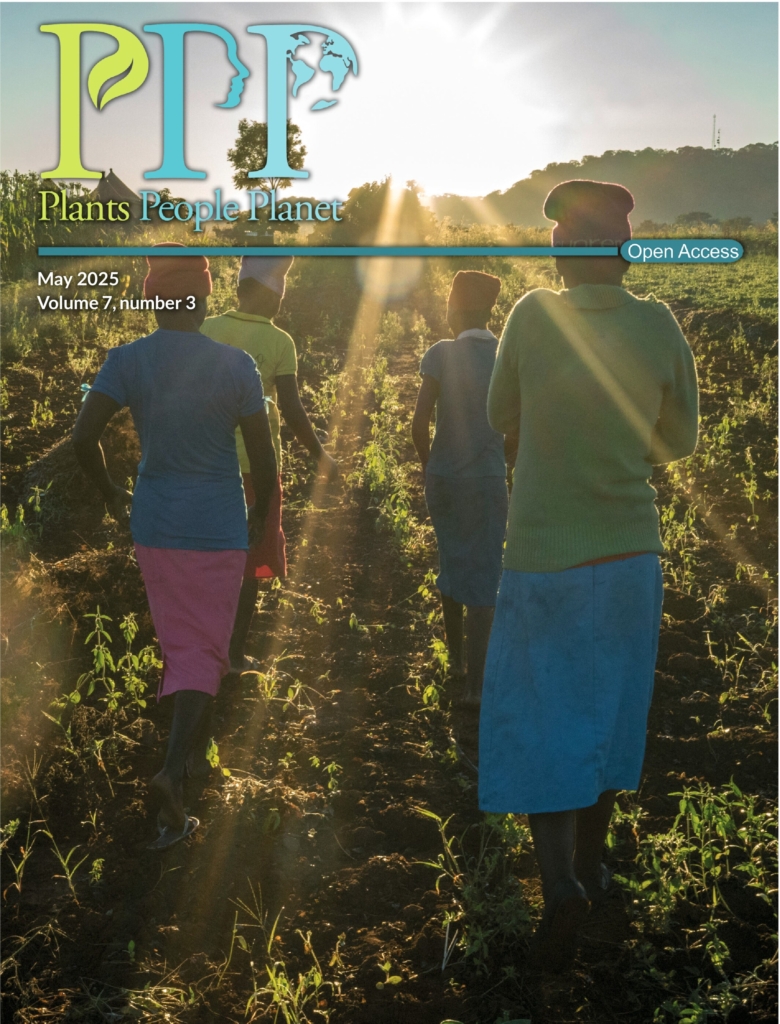
Building synergies among ground-based forest inventorying and monitoring networks to meet scientific, political, and societal needs
DOI: 10.1002/ppp3.70002
European forests play a crucial role in climate change mitigation and biodiversity conservation, though they are continuously adapting to rapid and continuous variations in environmental conditions. Ensuring their health and resilience requires timely detection of changes in forest status, functioning, and provided ecosystem services. However, accurate predictions of their future ecological, economic and social contributions depend on a well-coordinated approach that brings together ground-based forest inventory and monitoring networks, community science, and key stakeholders.
A new paper published by Guerrieri and colleagues from the CLEANFOREST Cost Action core group highlights the urgent need for stronger synergies among these players. The authors advocate for a new era of forest monitoring and inventorying, where networks collaborate and coordinate their efforts to systematically track and assess the state and long-term changes of European forests. This can be achieved with the creation of an ‘alliance’ of forest monitoring and inventorying programs, which should fall under the auspices of international political bodies. The alliance could serve as the pan-European research infrastructure that centralizes discussion on protocols for data collections and data harmonization, priority needs for current and future monitoring and accessibility to the data from relevant end users, thus strengthening the European forest monitoring system.. The alliance is timely and essential to support the proposed EU Forest Monitoring Law, as well as other relevant European policy targets.
This Perspective paper is the result of debate during and after the panel discussion on ‘Building a common vision on forest monitoring amid global change: challenges and opportunities’ during the first annual meeting of the CLEANFOREST COST Action in Thessaloniki in 2023.
Plants, People, Planet is a multi-disciplinary Open Access journal, owned by the New Phytologist Foundation and published by Wiley. The journal publishes outstanding plant-based research in its broadest sense and celebrates everything new, innovative and exciting in plant-focused research that is relevant to society and people’s daily lives. The New Phytologist Foundation is an independent, not-for-profit organisation dedicated to the promotion of plant science.
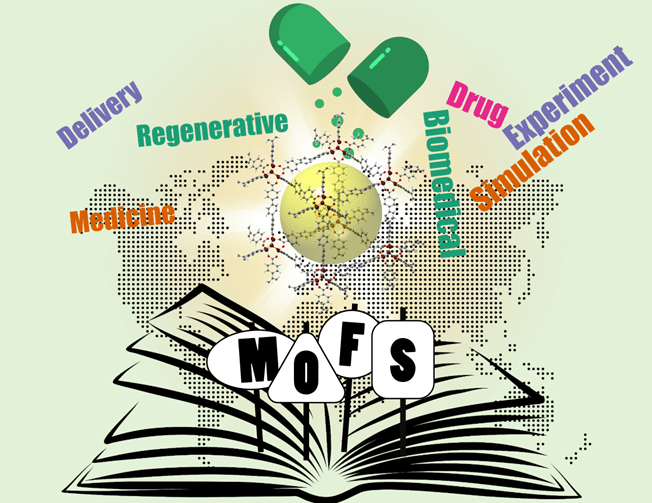
Biomedical Applications of Metal-Organic Frameworks Revisited
DOI: https://doi.org/10.1021/acs.iecr.4c03698
In the past decade, metal-organic frameworks (MOFs) have been extensively researched for biomedical applications, particularly drug storage, after proving to be excellent substitutes for traditional porous materials. Biomedical applications of MOFs have been greatly expedited with the recent integration of data science and molecular modelling approaches to experimental research, establishing them as essential elements in medical imaging, diagnostics, and regenerative medicine. In this review, to demonstrate the potential of MOFs in cutting-edge treatments for neurological and cancer diseases, we examined the molecular interactions between MOFs and biological systems and discussed the field’s opportunities and challenges.
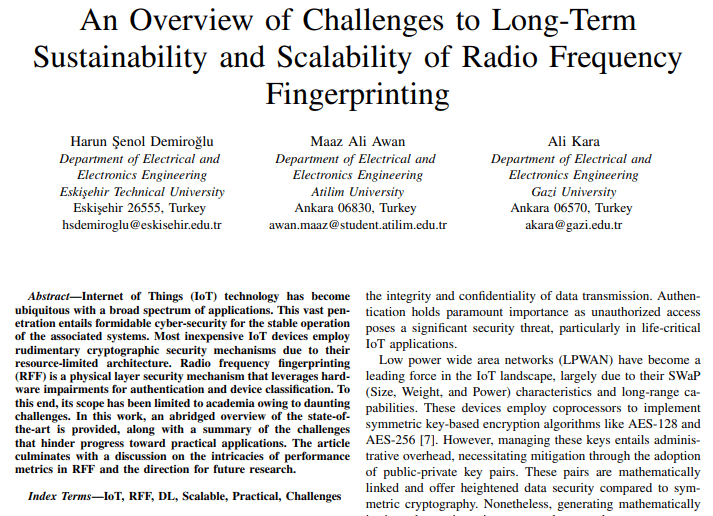
An Overview of Challenges to Long-Term Sustainability and Scalability of Radio Frequency Fingerprinting
https://doi.org/10.1109/ICCSPA61559.2024.10794273
The Internet of Things (IoT) is transforming industries with its plethora of applications, from smart cities to healthcare. However, this rapid proliferation comes with a pressing need for additional cybersecurity needs to ensure stable and resilient operations. Resource-constrained IoT devices often rely on basic cryptographic mechanisms, allowing innovative solutions like Radio Frequency Fingerprinting (RFF) to thrive and enhance physical layer security. As part of European Union COST Action, this study dives into the current state-of-the-art in RFF, a technique that utilizes unique hardware characteristics for device authentication and classification. Key Takeaways: Challenges in Real-World Deployment: While RFF has shown promise in academic settings, its practical applications are limited by technological barriers. There is a burgeoning need to deliberate the potential CONOPS (concept of operation) and operational scenarios encountered in real world deployment. The research sheds light on critical performance metrics and the complexities of evaluating RFF systems. By addressing these challenges, the study lays a foundation for advancing RFF from theory and controlled environment to practical implementation, enabling its integration into secure IoT ecosystems. By connecting this work to the COST action, we aim to foster collaboration across Europe to develop cutting-edge security solutions for networks of the future.
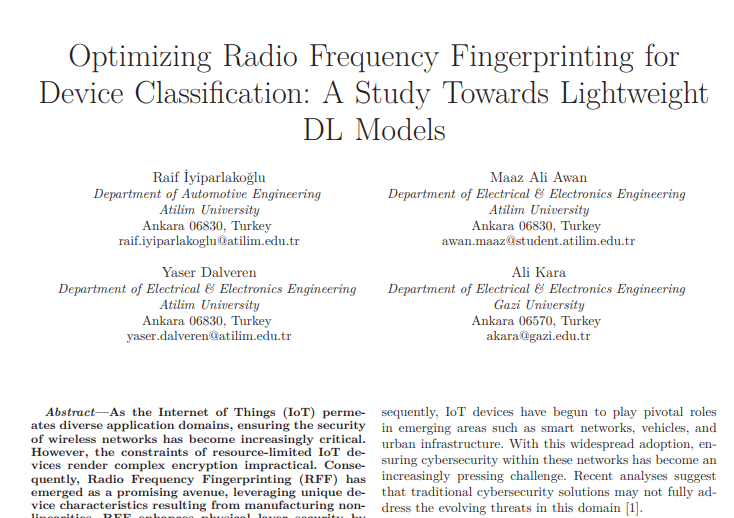
Optimizing Radio Frequency Fingerprinting for Device Classification: A Study Towards Lightweight DL Models
https://doi.org/10.1109/ICCSPA61559.2024.10794386
We developed a lightweight 1D Convolutional Neural Network (CNN) model optimized for edge devices, reducing inference latency while maintaining high classification accuracy. Using an open-source dataset of 30 LoRa devices, we evaluated preprocessing methods (Short Time Fourier Transform (STFT) and Fast Fourier Transform (FFT)). Our approach demonstrated: A significant reduction in inference latency, making deployment on real-time edge devices feasible. Comparable classification accuracy when benchmarked against a 2D CNN model. This work not only bridges a crucial gap in the literature but also propels the adoption of RFF for edge devices—an essential step for secure IoT networks in 6G. By aligning this effort with COST Action, we aim to foster collaboration across Europe to achieve secure, resilient, and trustworthy 6G systems.
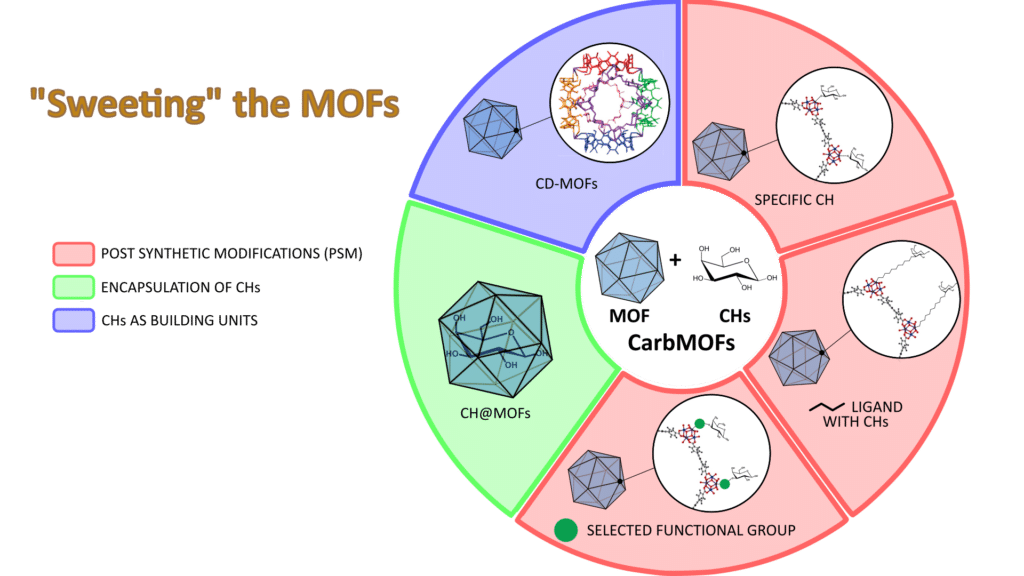
“Sweet MOFs”: exploring the potential and restraints of integrating carbohydrates with metal–organic frameworks for biomedical applications
DOI ref: https://doi.org/10.1039/D4NH00525B
This review highlights recent advancements in combining metal–organic frameworks (MOFs) with carbohydrate chemistry to create biocompatible systems for biomedical applications. MOFs offer unique properties like biodegradability, low toxicity, and high surface area, enabling functionalization with biological ligands and the loading of active cargos, from small drugs to biomacromolecules. Recent research focuses on leveraging carbohydrate chemistry to functionalize and modify MOF structures, aiming for efficient and naturally inspired designs. The review discusses the field’s progress over the past five years, addressing both its potential and challenges, including sustainability and real-world applicability.
